#Framingham state
Photo

The Bay State Inaugural Train
Lehigh Valley private car "The Black Diamond" brings up the markers. Notice the banjo sign.
Framingham, MA
10/20/1984
#bay state#amtk#amtrak#lv#lehigh valley#1984#washington dc#boston#trains#passenger train#history#framingham#massachusetts#business car
5 notes
·
View notes
Text
Every March-April RTC Production that I know of !! (If you go to any of these, please get an audio !!)
Apex Theatre Studio, St Augustine, Florida — March 3rd — March 5th, then again March 9th — 10th.
Fed's Backyard Theatre, Bradenton, Florida — March 10th — 12th (Sold out in person tickets — $5 Streaming tickets !!)
Bridges Theater Co, Point Park University, Pittsburgh, Pennsylvania — March 24th — 26th
College Of The Holy Cross, Worcester, Massachusetts — March 30th — April 2nd.
The Playhouse Collective, Toronto, Ontario — March 29th — April 1st.
RGC Theatre, Portsmouth, New Hampshire — April 14th — April 16th (Revival performance, also being livestreamed !!)
Emerson College, Boston, Massachusetts — April 14th — 16th
Roxy's Downtown LLC, Wichita, Kansas — April 6th — April 29th (according to the rights website — dates may be off).
Phoenix College, Phoenix, Arizona — April 20th — April 23rd.
The Hill School, Pottstown, Pennsylvania — April 21st — April 23rd.
Framingham State University, Framingham, Massachusetts — April 21st — April 22nd !!
Southwestern University, Georgetown, Texas — April 21st — April 30th.
Tulane University, New Orleans, Louisiana — April 28th — 30th
118 notes
·
View notes
Text
November is National Native American Heritage Month
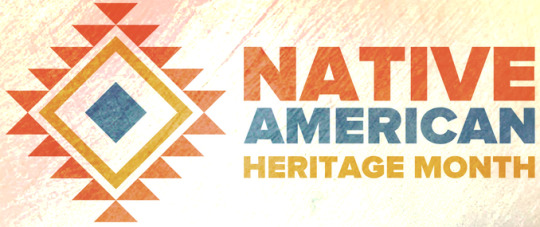
About National Native American Heritage Month: What started at the turn of the century as an effort to gain a day of recognition for the significant contributions the first Americans made to the establishment and growth of the U.S., has resulted in a whole month being designated for that purpose. (https://nativeamericanheritagemonth.gov/about/)
National Day of Mourning
The National Day of Mourning is an annual demonstration, held on the fourth Thursday in November, that aims to educate the public about Native Americans in the United States, notably the Wampanoag and other tribes of the Eastern United States; dispel myths surrounding the Thanksgiving story in the United States; and raise awareness toward historical and ongoing struggles facing Native American tribes. Learn more about the National Day of Mourning and its close ties to Massachusetts history at the GBH news story: https://www.wgbh.org/news/local-news/2020/11/26/for-native-americans-its-not-thanksgiving-its-a-national-day-of-mourning
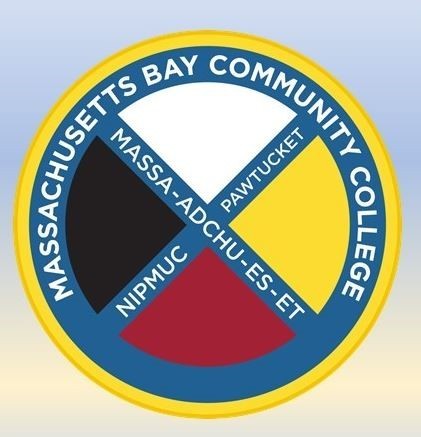
MassBay Land Acknowledgement
Massachusetts Bay Community College wishes to acknowledge that the Wellesley, Framingham, Ashland campuses sit on land that was appropriated by the US Federal government from the Nipmuc, Massa-aschu-es-et (Massachusetts) and Pawtucket tribes. MassBay cannot change the past but what we can do is honor the land, the ancestors, and the indigenous traditions as we at MassBay use this sacred land as a communal place to nurture learners to move forward and make a more inclusive world.
Native Land Digital Interactive Map
You can take your first steps in honoring indigenous and native lands by learning about the land you currently live on and occupy. Take this step by visiting Native Land Digital Interactive Native Land map: https://native-land.ca/
The 2020 list of federally recognized tribes through the Bureau of Indian Affairs
Learn More at the Native American Heritage Libguide and View Resources at the MassBay Library
Celebrate and pay tribute to the rich ancestry and traditions of Native Americans. Learn more at the Native American Heritage Libguide with links to eBooks, journals, articles, events, podcasts and websites that are sources of information on Native American culture and history.
You can also see our display of native American tribal maps in the study area near the computers at the Wellesley campus library.
#national day of mourning#national native american heritage month#native american heritage month#native american heritage#library displays#libguide
197 notes
·
View notes
Text
[“The ubiquitous use of tranquilizers and psychotropic drugs as a frontline strategy of control and punishment came under fire in CSIV’s and Framingham prisoners’ writings. As one contributor to Turning Point wrote in 1977: “If you have a deep rooted problem, real or imaginary, and attempt to convey these feelings to the powers that be, you are shuttled off to that pseudo psychiatrist in residence…. His remedy for everything is 200 mg of thorazine, Mellarill, or any one of the latest ‘untried’ mind deadenizers. You can’t go thru life in here or society doing the ‘Thorazine Shuffle,’ but any overt attempt to deal with your anger and that’s what you’ll be doing…. As a matter of course, any outbursts will be dealt with accordingly. Not the reasons but the deeds. So what recourse do you have left except to hold back the dam and wait til you are ‘released’ back to society to unleash the torrent. This is of their own making, they pay the piper.”
The oft-heard slogan, “Free Our Sisters, Free Ourselves,” aptly epitomizes the group’s contention that the Worcester center could be construed as an attack on “all women.” Activists argued that the center was an especially violent “response to all women who are angry and fighting back against the power of the patriarchal system to define our roles and control our lives.” It ensconced narrow definitions of acceptable women and simultaneously created opaque and broad definitions of violent ones. As Breece recalls, “We could see from the vagaries that it was a big wide fishing net and that anybody at any given time could fit their criteria.”
CSIV writers, however, routinely emphasized the ways in which race, class, sexuality, and gender expression mediated women’s relationships to policing and incarceration, and the coalition they represented embodied these differences of social location to a meaningful extent. Those most likely to end up in a Worcester center, activists speculated, would be “poor women, Black women, Hispanic women, Lesbians—any woman who lacks sufficient money and privilege to escape incarceration by the State.”]
emily l. thuma, from all our trials: prisons, policing, and the feminist fight to end violence, 2019
69 notes
·
View notes
Text
Among a group of nearly 3,000 Finnish men, 153 of them had donated blood at least once in the 24 months preceding the start of the study. The entire group was followed for an average of nine years. In that time, one (0.7%) of the donors had a heart attack, while 316 (12.5%) of the non-donor men had a heart attack. After adjusting for age and all the cardiac risk factors they could think of (cholesterol, weight, etc.), the researchers found that blood donors had an 88% reduced risk of heart attack.
This study tried to adjust for a healthy donor effect by factoring in standard cardiac risk markers, although there might be additional factors that weren't considered.
In an American population of both men and women who were 40 years old or older and followed for cardiovascular events, those who had donated blood were half as likely to have an event such as a heart attack or stroke. All subjects in this study, both donors and non-donors, had no cardiovascular disease at the start of the study.
To get around the healthy donor effect, some studies have compared frequent blood donors to infrequent donors. In one such study, those who had given blood at least once in each of three consecutive years were compared to people who only gave blood one time during the same period. In the following ten years, frequent donors were 40% less likely to have a cardiac event as were infrequent donors.
[...]
The Copenhagen City Heart Study has studied thousands of residents of that city for many years, and is similar to the Framingham Study in the United States. One research group looked at the study's data on almost 9000 people to determine the relation between ferritin (iron) and death rates.
They found that “stepwise increasing concentrations of ferritin were associated with a stepwise increased risk of premature death overall”. People with a ferritin of greater than 600 (a high number) had a median survival age of 55, meaning that of those who had a ferritin that high, half were dead by that age. Those with a ferritin of 400 to 599 lived an average of 72 years; at 200 to 399, 76 years, and if the ferritin was less than 200, 79 years.
-- P. D. Mangan, Dumping Iron
21 notes
·
View notes
Note
bro bro bro. heres a bro question whats your favourite beers
This is an interesting question that I am going to give a terribly long and unsatisfying answer to.
The state of beer in America right now is ridiculous. I mean this in a good way. There are breweries EVERYWHERE now. Beer distribution in america used to be extremely limited by laws that were lobbied for by a few huge distribution companies, so basically you would see most of the same beers on the shelves everywhere in the country besides a few local exceptions. So it was easy to have a favorite beer because if you went to the store there were maybe 50 beers if it was a nice store and they were always basically the same.
But craft breweries have popped off in the last 20 years or so, and it has changed everything, because where there were 50 beers now there are hundreds, and if you go straight to the breweries (and why wouldnt you if you live near one?) they have limited batches of beers you might love but never drink again if they never brew it again. Breweries still have "flagship" beers, meaning the one beer of theirs youre likely to see on store shelves or on tap at a bar, but now we have access to the whole line of what they make at the brewery.
So I dont really have a favorite beer anymore, because beer is just extremely good in general now but also many of the beers i find myself loving are fleeting experiences. And even if i did have favorite beers it wouldnt be very helpful to anybody who doesnt live within a few states of me because you are almost always better off just going someplace local and finding your own favorites than spending time seeking out holy grails of beer from other places that probably arent going to be much better!
I will say that drinking beers outside at Hill Farmstead in Vermont is my favorite thing in the world to do besides fucking. It's on the top of a rolling mountain with a view forever and it smells like cow shit in the best possible way and all of their beers are sublime.
Cambridge Brewing Company has been around since like 1990 or something, sort of the original boston-area brew pub, and personally I think they are underrated. Their beers are consistently good and the food is also consistently good and I like the bartenders there. The beer there wont change your life but there are always dogs on the patio and Ive wasted a lot of wonderful days there.
I love Jack's Abby in framingham massachusetts because they mostly make lagers, and I am at an age where getting drunk isnt really the point anymore, so I would rather drink 4 lighter beers and hang out than drink 2 heavy beers and have to lie down. Everything Jack's Abby makes is good. Perfect lawnmower/shower beers. Perfect hangout beers. Its like if Budweiser actually tasted good. You can drink 6 of them and still act like a civilized person.
That's stuff I like. But my main beer advice is to check out whatever breweries are closest to you, because fresh beer is good beer.
#fishvibes?#i have a lot of thoughts on beer i guess#which makes sense because i am probably about 50% beer at any given moment#if any of you want to buy a big red farmhouse in vermont and need a mysterious old hermit who is shockingly cute to be its caretaker#im your man
9 notes
·
View notes
Photo

"Crispus Attucks," by Herschel Levit, mural at the Recorder of Deeds building, built in 1943
Crispus Attucks (c. 1723 – March 5, 1770) was an American whaler, sailor, and stevedore of African and Native American descent, who is traditionally regarded as the first person killed in the Boston Massacre, and as a result the first American killed in the American Revolution.
While he is widely remembered as the first American casualty of the American Revolutionary War, 11-year-old Christopher Seider was shot a few weeks earlier by customs officer Ebenezer Richardson on February 22, 1770. Historians disagree on whether Attucks was a free man or an escaped slave, but most agree that he was of Wampanoag and African descent. Two major sources of eyewitness testimony about the Boston Massacre published in 1770 did not refer to him as black or as a Negro; it appears he was instead viewed by Bostonians as being of mixed ethnicity. According to a contemporaneous account in the Pennsylvania Gazette, he was a "Mulattoe man, named Crispus Attucks, who was born in Framingham, but lately belonged to New Providence, and was here in order to go for North Carolina."
Attucks became an icon of the anti-slavery movement in the mid-19th century. Supporters of the abolition movement lauded him for playing a heroic role in the history of the United States.
#Crispus Attucks#people in history#anti-slevery movement#xviii century#Herschel Levit#murales#art#arte#Rocerder of Deeds
6 notes
·
View notes
Text
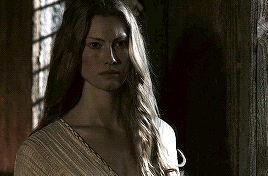
was that shauna hammond i saw by the lighthouse today? i heard that the thirty-seven year old who has been in nightrest for thirty seven years and works as a gas station clerk has a reputation of being optimistic, but also impatient. they reside in low point & people in town usually associate them with the smell of black coffee and stale smoke, photo albums shoved onto shelves to gather dust, and smiles that never land the way she intends.
FULL NAME: Shauna Mallory Hammond
PRONOUNS AND GENDER: Cis woman, she/her
AGE: 37
SEXUALITY: Queer
OCCUPATION: Gas station attendant
HOMETOWN: Nightrest
NEIGHBORHOOD: Low Point
TL;DR:
Nightrest local
Recently released from MCI-Framingham prison after serving two years after embezzling a little under 7 grand from the casino she managed because girly has gambling addiction
SHOULD BE NOTED she ruined her wife's (now ex-wife) with her gambling addiction because she drained both their bank accounts to try to dig herself out of her debt
she is the one who proposed the divorce so none of her legal fees feel back on norah
got released from prison and was surprised to find she would still be divorced and her now ex had no interest in reconciling
still owes the state of massachusetts a bunch of money and is still trying to make things right by norah
is currently living with her sister while she tries to get back on her feet
FUN DUMB STATS:
Birthday: December 1
Zodiac Sign: Sagittarius ☉ | Sagittarius ☽ | Libra➶
MBTI: ENTP
Enneagram: Type 6w9
Temperament: Sanguine
Moral Alignment: True neutral
Element: Earth
WANTED CONNECTIONS:
childhood friends
friends who have grown apart
ex-wife
prison penpal
ESTABLISHED CONNECTIONS:
ex-wife – norah grady
tbd
VIBES:
pinterest | playlist
3 notes
·
View notes
Text
College Football By State - Massachusetts
FBS:
Boston College Eagles – Chestnut Hill, Massachusetts – They played their first game in 1893. They are in the ACC.
University Of Massachusetts Minutemen – Amherst, Massachusetts – They played their first game in 1879. They are currently an FBS Independent.
FCS:
Harvard University Crimson – Cambridge, Massachusetts – They started playing in 1873. They are in the Ivy League.
Holy Cross Crusaders – Worcester, Massachusetts – They started playing in 1891. They are in the Patriot League.
Merrimack College Warriors – North Andover, Massachusetts – They started playing in 1947. They just moved up to FCS, and they are in the
Northeast Conference.
D2:
American International College Yellow Jackets – Springfield, Massachusetts – They are in the Northeast 10 Conference (NE10).
Assumption University Greyhounds – Worcester, Massachusetts – They are in the Northeast 10.
Bentley University Falcons – Waltham, Massachusetts – They are in the Northeast 10.
D3:
Amherst Mammoths – Amherst, Massachusetts – They first played in 1877. They are in the New England Small College Athletic Conference (NESCAC).
Anna Maria Amcats – Paxton, Massachusetts – They first played in 2009. They are in the Eastern Collegiate Football Conference (ECFC).
Bridgewater State Bears – Bridgewater, Massachusetts – They first played in 1960. They are in the Massachusetts State Collegiate Athletic
Conference (MASCAC).
Curry Colonels – Milton, Massachusetts – They first played in 1965. They are in the Commonwealth Coast Conference (CCC).
Dean Bulldogs – Franklin, Massachusetts – They first played in 1957. They are in the ECFC.
Endicott Gulls – Beverly, Massachusetts – They first played in 2003. They are in the CCC.
Fitchburg State Falcons – Fitchburg, Massachusetts – They first played in 1984. They are in the MASCAC.
Framingham State Rams – Framingham, Massachusetts – They first played in 1974. They are in the MASCAC.
UMass Dartmouth Corsairs – North Dartmouth, Massachusetts – They first played in 1988. They are in the MASCAC.
Massachusetts Maritime Buccaneers – Buzzards Bay, Massachusetts – They first played in 1973. They are in the MASCAC.
MIT Engineers – Cambridge, Massachusetts – They first played in 1881. They are in the New England Women’s and Men’s Athletic Conference
(NEWMAC).
Nichols Bison – Dudley, Massachusetts – They first played in 1932. They are in the CCC.
Springfield Pride – Springfield, Massachusetts – They first played in 1890. They are in the NEWMAC.
Tufts Jumbos – Medford, Massachusetts – They first played in 1875. They are in the NESCAC.
Western New England Golden Bears – Springfield, Massachusetts – They first played in 1981. They are in the CCC.
Westfield State Owls – Westfield, Massachusetts – They first played in 1982. They are in the MASCAC.
Williams Ephs – Williamstown, Massachusetts – They first played in 1881. They are in the NESCAC.
WPI Engineers – Worcester, Massachusetts – They first played in 1887. They are in the NEWMAC.
Worcester State Lancers – Worcester, Massachusetts – They first played in 1985. They are in the MASCAC.
The Awards!
My Favorite Mascot – The Amherst Mammoths. (But the UMass Dartmouth Corsairs AND Tufts Jumbos AND Western New England Golden Bears get honorable Mentions.)
The "Deadly Sin" Award – Springfield Pride.
The "Color Wheel" Award – The Harvard Crimson.
The "Best Town Name" Award – Buzzards Bay, Massachusetts. (Home of Massachusetts Maritime).
2 notes
·
View notes
Text
They know the answer. It’s in the article. It’s men abusing and killing women.
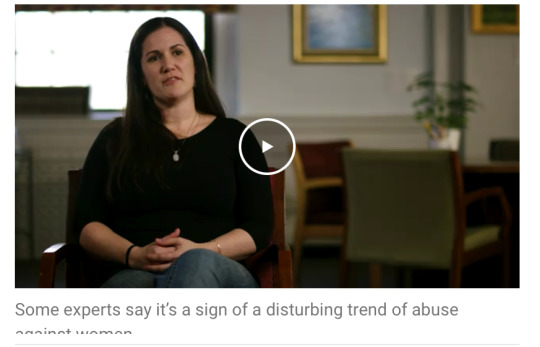
Massachusetts has seen a string of mysteries involving women who have disappeared. Some of the most recent cases include new calls for help from Framingham and Brookfield, to a case that's lasted for months out of East Boston, to the disappearance of a mom in Cohasset that grabbed international headlines.
A local expert who tracks these kinds of things says she can't remember so many missing women in the Bay State at one time. The circumstances in each case are different but for their families, the pain and questions are all too similar.
BRITTANY TEE
In Brookfield, the worry is magnifying as the search continues for 35-year-old Brittany Tee.
"She would not do this on purpose," her sister Bethany said Monday. "She has never left, we always know where she was."
Authorities said Monday they are planning to increase the scale of the search on Tuesday, which marks one week since Tee was last seen.
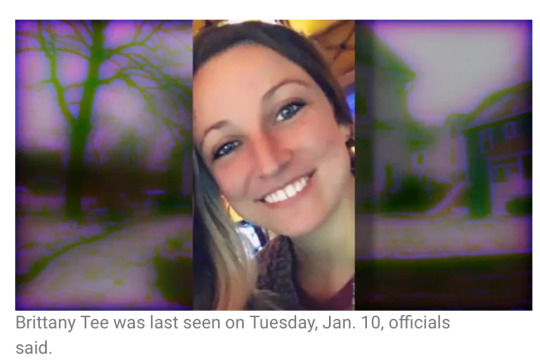
Police say Tee left a Main Street home around 8:30 p.m. on foot on Jan. 10 and disappeared near Lewis Field down the road. Her family reported her missing two days later, saying she left her car behind and her cellphone isn't working.
Tee is 5-foot-6 and 120 lbs. She was last seen wearing a hoodie and jeans, with a black winter coat and work boots on.
Anyone who may have home security cameras in the area, or who has information on her whereabouts is asked to call Brookfield police at 508-867-5570.
Brittany Tee hasn't been seen since Tuesday, Jan. 10.
REYNA MORALES ROJAS
Reyna Morales Rojas has been missing since November, according to Boston police.
The 41-year-old was last seen on Nov. 26 getting into a vehicle in the area of Bennington Street in East Boston and dropped off in Somerville. She was wearing a black shirt and pants, a gray sweater and was carrying a bag.
Morales Rojas is described as 5'5" and 145 pounds. She has black hair and brown eyes.
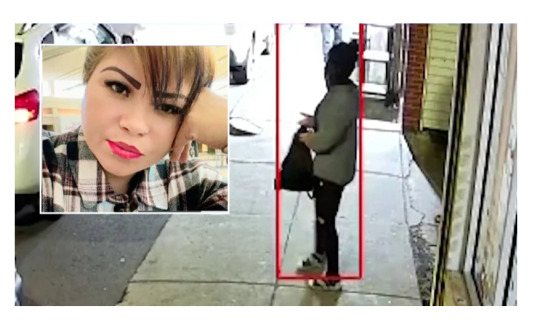
"My heart breaks just thinking about her not being here or that we may find her without her infectious smile.”
Morales Rojas has two children in El Salvador and they do not stop asking about her mother, the family says. Her sister adds that this is very strange because she talked to her sister every day, even the day she disappeared.
Anyone with information on her whereabouts is asked to call detectives at 617-343-4328.
LORI BAXTER
Boston police are searching for 45-year-old Lori Baxter, who was last heard from on Dec. 28.
Police say Baxter is known to frequent the Massachusetts Avenue, Melnea Cass Boulevard and Southampton Street area.
Anyone with information regarding Baxter's whereabouts is asked to call detectives at 617-343-5619.

MADELINE DESHAZO
Authorities said Monday they were looking for 33-year-old Madeline DeShazo, who had last been seen Thursday.
Tuesday, police announced that DeShazo has been located in Boston and is with family.
ANA WALSHE
Cohasset mother of three Ana Walshe remains missing, having last been seen at her home since the early morning hours on New Year's Day.
Her husband, Brian Walshe, was charged with murderon Tuesday — he'd previously been charged with misleading police in their investigation, and pleaded not guilty.
Information has come to light involving his past run-ins with the law.
A vigil was held for the missing 39-year-old woman last week at the Cohasset Town Common, as her family in Serbia says they are getting more worried every day.

A 2014 report obtained by NBC10 Boston from police in Washington D.C. shows that Ana Walshe once told authorities that her husband threatened to kill her.
During Brian Walshe's arraignment in Quincy District Court, prosecutors said that blood and a bloody knife were found in the basement of the Walshe home, and said Brian Walshe lied about his whereabouts to police. The state also said that Walshe spent $450 buying cleaning supplies at a Home Depot.
This case has also seen exhaustive police searches through dumpsters, as detectives sift through garbage for potential evidence.
Anyone with information on Walshe's whereabouts is urged to contact detectives at 781-830-4990.

EXPERTS WEIGH IN
With each passing day, these investigations are growing more difficult.
"Timing is a very important aspect in the investigation, the longer the case goes on, the longer the person is missing, certain leads will possibly go stale," said security analyst Todd McGhee.
New England Law Professor Wendy Murphy is co-director of the Women's and Children's Advocacy Project. She says she has tracked troubling trends when it comes to women facing danger.
"You may think these cases are unrelated, but I think they are related," she said of all of the disappearances. "Boy it has never been this bad. I can't remember a time when we had this many missing women in such a short period of time."
Police in each case say the investigations are continuing.
#massachusetts#missing women#brittany tee#Reyna morales rojas#Lori baxter#Madeline deshazo#Ana walshe
3 notes
·
View notes
Photo

The Bay State Inaugural Train
A introduction to the new service to the inland route. This is the second time Amtrak would run this name "The Bay State". Crossing over from #2 track to #1 track at the new CP-21.
Framingham, MA
10/20/1984
#bay state#amtk#amtrak#1984#washington dc#boston#trains#passenger train#history#framingham#massachusetts
2 notes
·
View notes
Text
Explore the Lifestyle of Meadowbrook Alabama

Meadowbrook is a small, rural town located in the Alabama. The town is known for its small town charm, friendly locals, and picturesque scenery. The lifestyle in Meadowbrook is relaxed and laid-back, with a focus on family and community. Residents enjoy outdoor activities such as fishing and hunting, as well as shopping and dining in the small local businesses in town. There are several local parks and recreation areas in the area, which provide residents with plenty of activities to enjoy. The town is also home to a few churches, schools, and other community services. Residents of Meadowbrook take great pride in their community, and are always willing to lend a helping hand to their neighbors.
The area has a bustling community that offers plenty of activities and amenities. Residents of Meadowbrook can enjoy three public beaches, an excellent school system, and a variety of restaurants. The town is also home to several boat launches, fishing spots, and an adjacent wildlife refuge. There are plenty of cultural attractions and events in the area, such as the summer Blues on the Water Music Festival and the annual Fourth of July Fireworks Celebration. The city of Meadowbrook also has several parks, including a skateboard park, which are great for outdoor activities. Additionally, there are many unique stores and boutiques in the area.
Natural Beauty of Meadowbrook
Meadowbrook Park is an exquisite natural area located in Utah and provides wonderful hiking and outdoor recreational opportunities for visitors. From towering cliffs and dramatic landscapes to sparkling lakes and meandering streams, Meadowbrook Park is as beautiful as it is diverse. The park is home to some of the most stunning vistas in the state, and its sweeping views of the Wasatch Mountains and Great Salt Lake provide incomparable opportunities for exploration. With miles of trails, interpretive nature walks, and educational programs, Meadowbrook Park is the perfect place to visit for a truly extraordinary outdoor experience. With its majestic peaks and cascading waterfalls, Meadowbrook Park is no doubt one of Utah's must-see attractions.
It is known for its captivating landscapes and tranquil hues. The meadow itself consists of rolling hills, lush green fields, and a meandering river that flows through the area. Autumn brings an especially vibrant and colorful sight, with vibrant hues of oranges, yellows, and reds standing out and creating a calming atmosphere. Meadowbrook is also known for its panoramic views, making it a great spot for hiking and birdwatching. Wildlife, including deer, fox, songbirds, and hawks, can be found in the meadow. In addition, a variety of wildflowers, trees, and shrubs make Meadowbrook a great spot to explore the outdoors and to take in the beauty of nature. Whether you’re looking for a leisurely stroll along the river, a challenging hike, or just a quiet spot to sit and enjoy the sights and sounds of nature, Meadowbrook offers something for everyone. If you’re looking for a truly memorable outdoor experience, Meadowbrook is the perfect place to experience the wonders of nature.
Explore Nature Trails of Meadowbrook
The Nature Trails of Meadowbrook have been carefully developed by local conservation groups and feature a variety of guided trails. Visitors are sure to find something interesting as they traverse meadows, wetlands and woods, taking in the sights and sounds of nature as they go. There is plenty to see and explore, including meandering streams, secret waterfalls, unique rock formations, forested areas with mature trees, wetlands, and open meadows. Stops along the trails feature benches, historical markers, and picnic tables, allowing visitors to rest and take in the views. Bird watching is a popular activity in the Nature Trails of Meadowbrook and the variety of birds is impressive. If you’re in the Framingham area, be sure to visit the Nature Trails of Meadowbrook. Whether you’re looking for a leisurely walk beside a stream, a hike up a hill or the opportunity to fish, there’s something for everyone in this unique outdoor space.
Member Spotlight
The Joint Chiropractic
1820 Gadsden Hwy, Birmingham, AL 35235, United States
+1 2054989341
The Joint Chiropractic — Trussville is a well renowned place for their high-quality chiropractic services. They are very affordable, convenient and specialized when it comes to providing pain relief from neck, head, knee & back.
They are offering $29 New Patient Special which includes a consultation, exam, and adjustment. One can even schedule an appointment at night or on the weekends. If you don’t have insurance, it doesn’t matter!
Open nights and weekends, walk-in chiropractor, no insurance needed.
3 notes
·
View notes
Text
Today began with another train ride on the greenline, followed by a lovely walk through the park and past the state house to arrive at DCAMM. Today we began our day by meeting with the accessibility division of DCAMM. Here we learned about the MAAB and ADA which are regulations for buildings to ensure accessibility. Often in the past disabled people were not accounted for and thus the accessibility division of DCAMM are trying to increase regulation of new building and continue the renovation of older buildings.
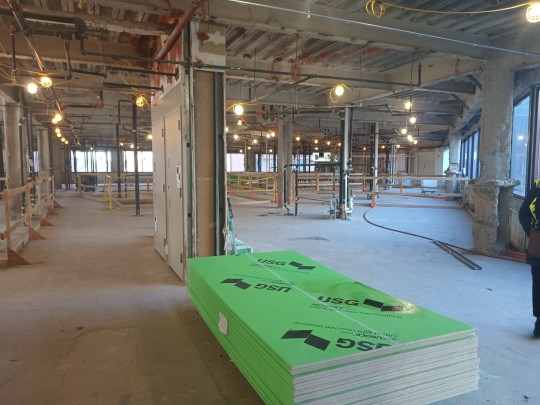
From the office we then departed for the Shattock Hospital which is being newly renovated to replaced its predecessor and namesake. Once on site we got an in depth introduction to the story behind the building which took many years to get to the point of construction and is one of DCAMM's largest project to date. We went down through the muddy construction site into the basement then took the elevator up to their on site DCAMM HQ. There we got to speak with one of their on site architects and their PM about the buildings design down to the hinges on the doors. We looked over the plans they had hanging on the walls and then began our tour. We got to see a completely gutted floor and one with walls still intact, then onto the mock up on the roof. The whole experience was fascinating, to get a glance into the design of hospitals-- especially on a state level.
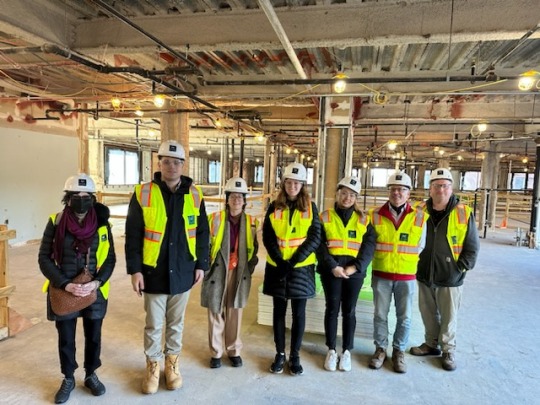
Then after a brief lunch break and a car ride out to Framingham we arrived at the new Mass Bay Community College building. This building will accommodate a spectrum of health care training facilities including mock nursing and EMT simulation classrooms. A new building, the exterior is beautifully modern with an art installation and many big windows. The interior was beginning to take shape as we got to see freshly plastered classrooms, offices and finally the roof. You could tell how much time was put into the process of designing this building.
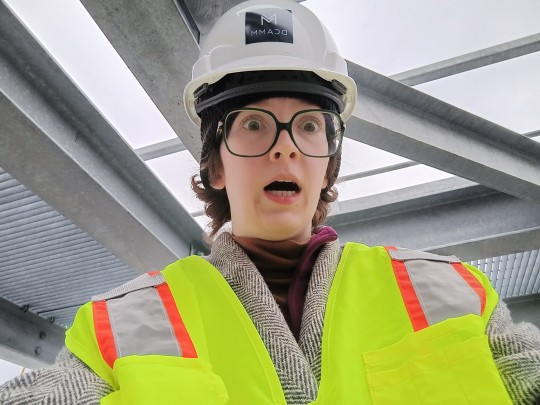
Then back to the greenline and safely home! Another great day at DCAMM!
3 notes
·
View notes
Text
Over 100 Protesters Oppose Brazilian Election in Harvard Square, Drawing Counter-Protest

Draped in Brazilian flags and holding signs alleging fraud, more than 100 protesters gathered in Harvard Square Sunday to oppose the results of the Brazilian presidential election.
Leftist leader Luiz Inácio Lula da Silva won the Oct. 30 election with 50.9 percent of the vote, replacing far-right incumbent Jair Bolsonaro, who garnered 49.1 percent after serving one term in office. Protests have erupted across Brazil and the United States, with some Bolsonaro supporters alleging the election was fraudulent and calling on the military to stop the transition of power.
There is no evidence to suggest the election was illegitimate. Brazilian military officials, who helped supervise the election, said they have not found any signs of voter fraud.
Sunday’s protest was organized by Congresso Conservador Brasileiro, a conservative Brazilian group based in Framingham.
A group of Harvard students counter-protested Sunday’s demonstration, calling the display an attack on democracy.
Continue reading.
#brazil#politics#brazilian politics#democracy#brazilian elections#harvard#brazilian elections 2022#mod nise da silveira#image description in alt
4 notes
·
View notes
Text
[“Prison activists in a variety of locales criticized behavior-modification programs for women, objecting to both their involuntary character and their harmful consequences. At stake was the propensity of corrections officials to enlist biomedical knowledge and practice in the service of quelling dissent and eroding constitutional safeguards for prisoners’ rights.
Medical humanities scholar Jonathan Metzl has shown that cultural and political discourses about racial protest were imprinted on medical diagnoses of mental illness in the 1960s and 1970s, and “new ‘psychochemical’ technologies of control merged with concerns about the ‘uncontrolled’ nature of urban unrest.” As activists involved with the black liberation, Puerto Rican independence, antiwar, and Red Power and Brown Power movements were sent to jails and prisons on charges linked to their political activities, prison administrators registered an acute sense of concern that prisoner dissent was aided and abetted by imprisoned radicals and the larger social movements with which they were affiliated.
For example, the warden of McNeil Island Federal Penitentiary in Washington State, speaking at a 1969 meeting of the American Correctional Association, identified the “fomenters” of what he called the “new rebellion” as “former prisoners, militants, far-out liberals, subversives, and even a few clergymen, educators, and social workers.” Prison administrators identified special control units (which in some cases were called “alternative program units”) and attendant behavior-modification regimens as a frontline strategy for suppressing dissent. Black, Latina/o, and indigenous prisoner organizers were routinely targeted for isolation and treatment. Prison psychiatrists underwrote the expansion of these practices by investing control units with medical expertise. As sensory deprivation, psychotropic drugs, and electroconvulsive shock therapy eclipsed the psychoanalytic and education-based approaches that had predominated in the 1950s, they “muddled commonplace distinctions between what constituted punishment, rehabilitation, and torture.”
Behavior modification contributed to what the sociologist Alondra Nelson refers to as the “biologization of violence” in the late 1960s and early 1970s. In 1967, psychiatrist Frank Ervin and neurosurgeons William Sweet and Vernon Mark, all affiliated with the Boston-based Neuro-Research Foundation, argued in the Journal of the American Medical Association that, in addition to the structural inequalities that spurred the black urban uprisings of the mid-1960s, “brain disease” was also to blame for “urban violence.”
In 1971, these proponents and practitioners of psychosurgery received a combined total of $600,000 ($3.6 million in today’s dollars) from the National Institute for Mental Health and the Department of Justice’s Law Enforcement Assistance Administration to “develop a way to identify and control persons who commit ‘senseless’ violence, as well as those ‘who are constantly at odds with the law for minor crimes, assaults and constantly in and out of jail.’” That same year, Boston newspapers reported that geneticists from Massachusetts General Hospital had collected fingerprints and blood samples from selected women prisoners at MCI-Framingham as part of a screening program designed to detect women’s genetic capacity for violence.”]
emily l. thuma, from all our trials: prisons, policing, and the feminist fight to end violence, 2019
64 notes
·
View notes
Text
The Pulse of Public Health: Exploring Epidemiological Research
In a world where health crises can erupt unexpectedly and rapidly affect global populations, understanding the patterns, causes, and effects of health and disease conditions in specific populations is more critical than ever. This understanding is the core mission of epidemiology, the cornerstone of public health. Through the lens of epidemiological research, we can grasp the pulse of public health and forge paths to healthier futures.
What is Epidemiology?
Epidemiology is often described as the science of public health. It involves the study of how diseases spread, what factors influence their transmission, and how they can be controlled or prevented. Epidemiologists are like health detectives, meticulously tracking disease outbreaks, identifying risk factors, and evaluating interventions to protect public health.
The Role of Epidemiological Research
Epidemiological research plays a pivotal role in:
Disease Surveillance: Monitoring the incidence and prevalence of diseases to detect outbreaks early.
Identifying Risk Factors: Understanding what increases the risk of diseases, whether genetic, environmental, or lifestyle-related.
Evaluating Interventions: Assessing the effectiveness of public health interventions, such as vaccines or lifestyle changes.
Informing Policy: Providing evidence-based data to guide public health policies and practices.
Methods in Epidemiological Research
Epidemiologists employ various research methods to gather and analyze data:
Descriptive Studies: These studies describe the distribution of diseases within a population by time, place, and person. They provide a snapshot of how diseases are affecting specific groups.
Analytical Studies: These include cohort, case-control, and cross-sectional studies designed to investigate the causes and risk factors of diseases. They compare groups to find associations between exposures and outcomes.

Chronic Diseases
Beyond infectious diseases, epidemiology also addresses chronic diseases like heart disease, diabetes, and cancer. Longitudinal studies, such as the Framingham Heart Study, have provided invaluable insights into the risk factors for cardiovascular disease, leading to better prevention and treatment strategies.
Challenges in Epidemiological Research
Epidemiological research faces several challenges:
Data Accuracy: Reliable data collection is paramount, yet it can be hampered by reporting biases, misdiagnoses, and incomplete data.
Ethical Concerns: Balancing the need for comprehensive data with respect for individuals' privacy and obtaining informed consent can be complex.
Evolving Threats: New and emerging diseases, such as antibiotic-resistant bacteria or novel viruses, continuously challenge existing epidemiological methods and require adaptive strategies.
The Future of Epidemiology
The future of epidemiology lies in embracing technological advancements and interdisciplinary approaches. Big data, machine learning, and genomic research are revolutionizing the field, enabling more precise and rapid analyses. Collaboration between epidemiologists, data scientists, and healthcare providers will be crucial in tackling the complex health issues of the future.
Important Information:
Conference Name: 15th American Healthcare, Hospital Management, Nursing, And Patient Safety Summit
Short Name: # 15AHNPSUCG2025
Dates: May 14-16,2025
Venue: San Francisco, United States & Virtual
Email: [email protected]
Visit: https://health.universeconferences.com/
Call for Papers: https://health.universeconferences.com/call-for-paper/Register here: https://health.universeconferences.com/registration/Call/WhatsApp Us: +442033222718
Conclusion
Epidemiological research is the heartbeat of public health, providing the insights needed to understand and combat health threats. From controlling infectious diseases to managing chronic conditions, the contributions of epidemiology are invaluable. As we move forward, continued investment in this essential science will be vital in safeguarding global health and ensuring resilient, healthy communities.
By staying attuned to the pulse of public health through robust epidemiological research, we can navigate the uncertainties of disease patterns and steer towards a future where public health triumphs over the myriad challenges it faces.
0 notes